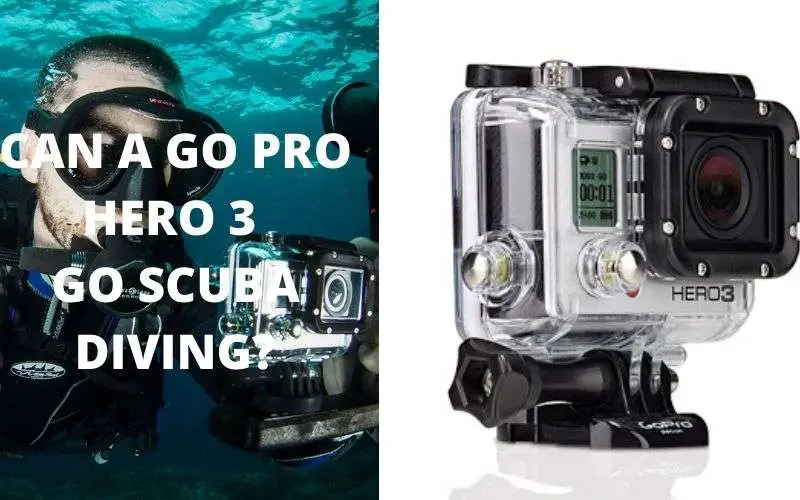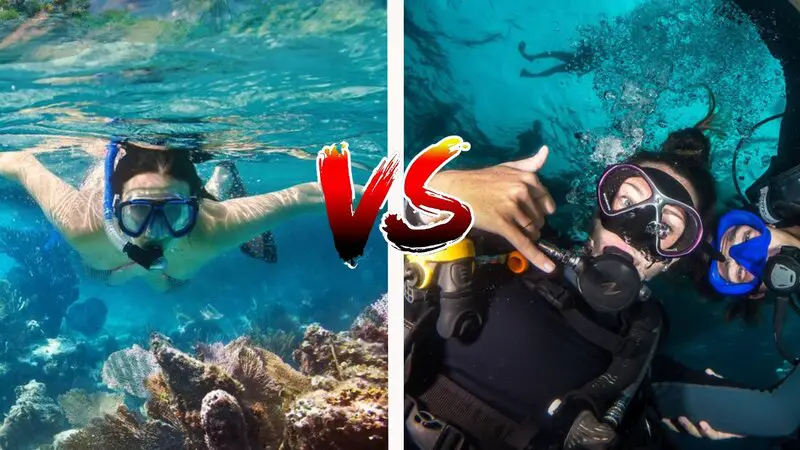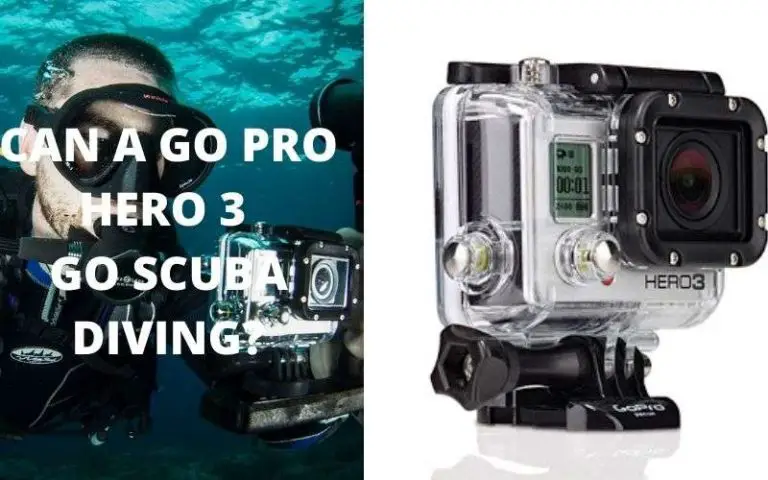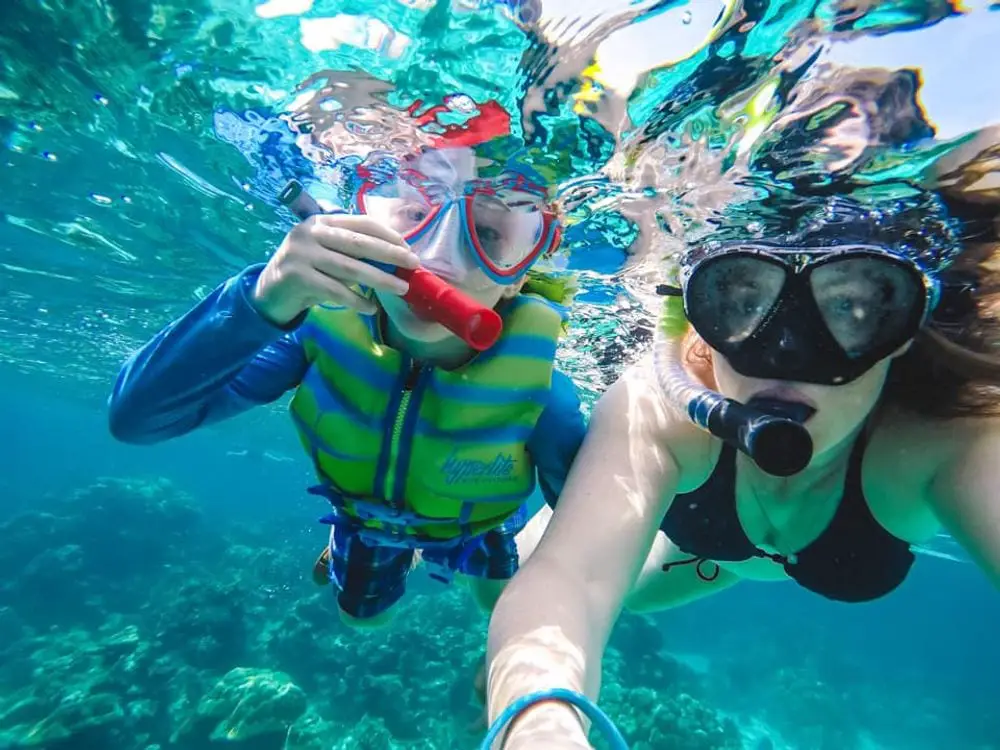
Snorkeling isn’t just an activity for seasoned adventurers; it’s an experience the whole family can enjoy while exploring the wonders of the ocean. Imagine encountering sea turtles, vibrant fish, and breathtaking coral formations.
However, when it comes to young children, parents often wonder if there’s a minimum age for snorkeling. While there’s no strict age requirement, safety and preparation are paramount when introducing youngsters to this aquatic adventure.
So, what’s the right age to initiate your child into the world of snorkeling, and how can you ensure their safety and enjoyment? In this comprehensive guide, we’ll delve into the art of teaching your children to snorkel, including finding the perfect gear, emphasizing safety, and offering tips for a successful snorkeling experience.
Introducing Your Kids to Snorkeling

Children are quick learners, especially when they have a capable role model to guide them. Thus, as a parent, you should be comfortable with snorkeling yourself to impart the necessary techniques and safety measures to your kids. If you need a refresher or are new to snorkeling, you can explore our beginner’s guide.
Once your children are at an age where being in the water feels as natural as being on land, it’s an ideal time to introduce them to basic snorkeling equipment. Allow them to play with a snorkel and mask in a controlled environment, such as a pool, bathtub, or shallow beach waters.
The objective is to acclimatize them to wearing snorkeling gear so that it becomes second nature, ensuring they can use it effectively when they venture into the ocean.
Getting the Perfect Mask
Selecting the right mask is a crucial step in ensuring your child’s comfort while snorkeling. Since children have smaller faces, it’s essential to opt for either kids’ snorkel masks or those designed for small faces to ensure a proper fit. Before use, make sure to clean the mask lenses to prevent fogging, which can obstruct their underwater vision.
Encourage your children to breathe through their mouths, as the nosepiece of a snorkel mask is designed for pressure equalization, not for breathing. This might be a challenge initially, but the excitement of observing underwater marvels will help divert their attention.
Fitting the mask correctly can be tricky with very young children, as discomfort can be a deal-breaker.
To ensure a comfortable fit:
- Choose a mask with a silicone skirt for a snug and comfortable seal.
- Brush their hair back and consider a swim cap to prevent hair-related leaks.
- Avoid over-tightening the straps; the mask should fit snugly without causing discomfort.
Remember that the fitting process may require some trial and error, so be patient and avoid pushing your child too hard, as it can lead to resentment towards snorkeling.
Using the Mask
Once you’ve achieved a secure mask fit, it’s time for your child to test it in the water. Encourage them to look for toys or objects in shallow water to ensure the mask doesn’t leak, fog up, or feel uncomfortable.
Additionally, teach them to clear their mask, starting in shallow water by slightly loosening the mask to let water flow out.
For older children, demonstrate how to clear the mask while treading water or even underwater by exhaling through the nose.
Keeping a defogging solution on hand during snorkeling trips can help combat foggy masks, which can be a source of annoyance for kids.
Mastering the Snorkel
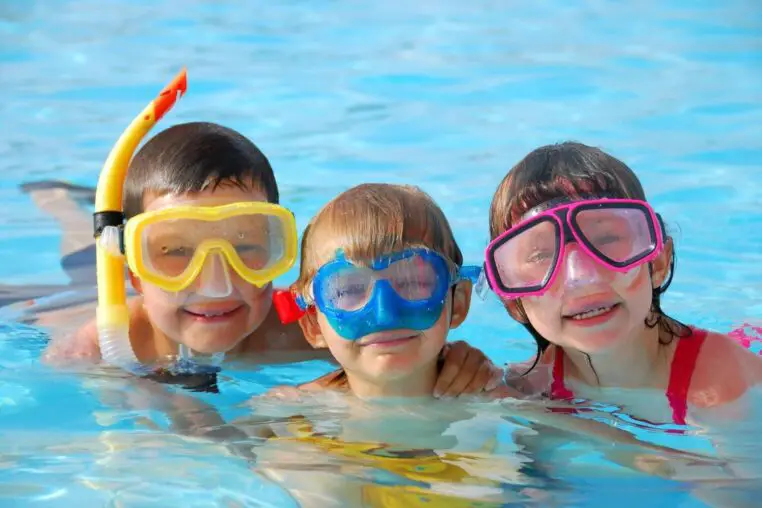
The next piece of equipment to introduce is the snorkel. While snorkels can be purchased separately, some snorkel masks come with integrated snorkels.
Teach your children to breathe through their mouths, as they may be accustomed to breathing through their noses. Ensure that the snorkel’s size is proportionate to your child’s age and lung capacity to prevent discomfort or inadequate airflow.
To familiarize your children with the snorkel:
- Begin on dry land with the snorkel in their mouth to practice breathing.
- Progress to shallow water where they can submerge their faces while breathing through the snorkel.
- Finally, allow them to swim while using the snorkel, effectively initiating them into snorkeling.
Advanced techniques, such as clearing the snorkel, can be taught as your children become more confident. The lift and dump method is suitable for beginners, but older kids can learn to purge the snorkel by lifting the mouthpiece and exhaling.
Flippers: To Wear or Not to Wear?
Flippers, though favored by many snorkelers, may not be enthusiastically embraced by children. If your child is resistant to using flippers, don’t insist. The essential snorkeling gear includes a mask and snorkel; flippers are optional.
Older children may appreciate the added propulsion and buoyancy that flippers provide. Teach them how to put on flippers, emphasizing that they should walk backward into the water to prevent tripping over the fins’ long blades.
Snorkeling Safety Tips for Kids in Open Water
Now that your children are equipped with snorkeling gear and basic skills, it’s time to venture into the open ocean. However, safety remains a paramount concern. Start by testing all gear in a controlled environment, such as a hotel pool, to ensure it’s functioning correctly.
When transitioning to real snorkeling destinations, choose locations with minimal waves, such as lagoons or protected bays, to reduce risks.
Flotation Devices (A Lifesaver)
Your children should wear flotation devices, such as life vests, snorkel vests, flotation belts, or pool noodles. For very young children, a life jacket is the safest option. Even in shallow water, using a kickboard or pool noodle can help them conserve energy and focus on underwater exploration while staying afloat. These devices also provide an extra layer of safety in case of unexpected riptides.
Stay Vigilant
Teach your children to be aware of their surroundings, not only for their safety but also for the safety of others. Collision accidents can be avoided through increased mindfulness. Additionally, heightened awareness can help your children avoid damaging coral formations while actively surveying their underwater surroundings for fascinating marine life.
Stay Close and Hold Hands
The younger your children are, the closer you should stay to them. Hold their hands or grip their life vests and remain near the shore. Even in shallow waters, sudden currents can sweep them away. Being in proximity allows you to protect and reassure your child in case of panic, injury, or fear.
Conclusion
There’s no set minimum age for snorkeling, and children as young as toddlers can enjoy this incredible activity when approached with care and preparation. By introducing snorkeling at a young age, children have ample time to improve their skills, making family vacations to snorkeling destinations like Hawaii, Thailand, or Mexico even more exciting.
Remember that while age isn’t a limiting factor, safety, and adequate training are essential. Snorkeling can become a cherished family pastime, creating lasting memories and bonding experiences for parents and children alike. As you guide your children through the wonders of snorkeling, they’ll follow your lead, ensuring that everyone has a fantastic time exploring the beauty beneath the waves.




